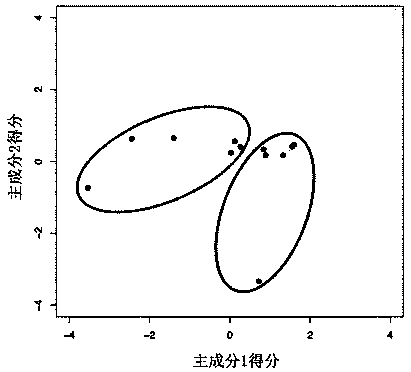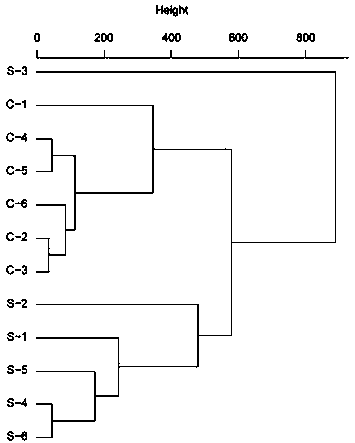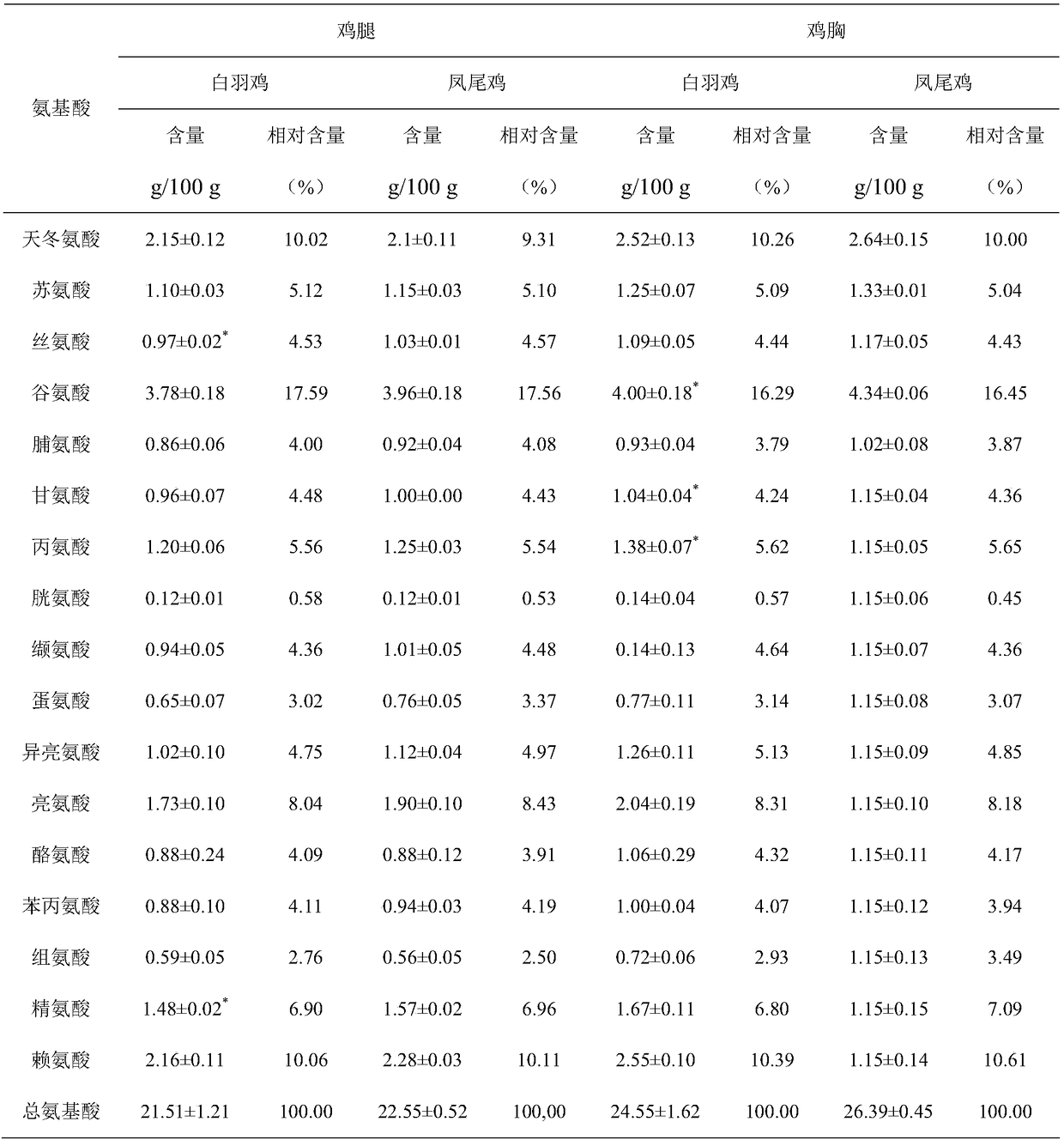Trace element spectrum method for tracing phoenix-tailed chicken
A technology of trace elements and chickens, which is used in measuring devices, instruments, analytical materials, etc.
- Summary
- Abstract
- Description
- Claims
- Application Information
AI Technical Summary
Problems solved by technology
Method used
Image
Examples
Embodiment 1
[0037] A trace element spectrum method for tracing the source of phoenix chicken, comprising the following method steps:
[0038] A, get anchovy chicken sample and white feather chicken chicken sample;
[0039] B. Determination of the element types and content in the phoenix chicken sample and the white-feather chicken sample;
[0040] C. Obtain the types and contents of the two kinds of chicken trace elements from step B, and then perform multiple comparative analysis to obtain trace element types with significant differences in the contents of the two chickens, and preliminarily infer that these trace elements with significant differences can be used In the traceability of phoenix chicken;
[0041] D. Use principal component analysis and systematic clustering to further analyze the trace elements that are preliminarily deduced in step C and can be applied to traceability of phoenix-tailed chickens, and verify that these trace elements can distinguish phoenix-tailed chickens...
Embodiment 2
[0045] 1. Detection of amino acid types and sample description
[0046] Detection of aspartic acid, threonine, serine, glutamic acid, proline, glycine, alanine, cystine, valine, methionine, isoleucine, leucine, tyrosine in chicken Amino acid, phenylalanine, histidine, lysine, arginine 18 kinds of amino acid content, and compared with the amino acid types and contents of commercially available white feather chicken. The specific description of the sample is as follows:
[0047] Anchovy chicken thighs are marked as: S1, S2, S3; anchovy chicken breasts are respectively marked as S4, S5, S6; a total of 6 samples; white feather chicken thighs are respectively marked: C1, C2, C3; commercially available White-feathered chicken breasts are marked as C4, C5, and C6 respectively; there are 6 samples in total, and 12 samples of two breeds of chickens in total.
[0048] 2. Detection methods and reference standards for data analysis
[0049] The detection method of amino acid content in...
Embodiment 3
[0061] 1. Detection of trace element types and sample description
[0062] The content of fifteen elements including Cr, Cu, Fe, Zn, Rb, Mn, Sr, Sn, Mo, Cs, Se, Ba, Co, Ag, Sb in phoenix-tailed chicken was detected, and it was compared with that of commercially available white-feathered chicken. The types and contents of elements were compared and analyzed. The specific description of the sample is as follows:
[0063] Anchovy chicken legs are marked as: S1, S2, S3; anchovy chicken breasts are respectively marked as S4, S5, S6; a total of 6 samples; white feather chicken thighs are respectively marked: C1, C2, C3; white feather chicken The chicken breasts are marked as C4, C5, and C6 respectively; there are 6 samples in total, and there are 12 samples in total for the two breeds of chickens.
[0064] 2. Detection methods and reference standards for data analysis
[0065] 1. The detection method of trace elements in phoenix-tailed chicken is based on GB 5009.268-2016 "Nation...
PUM
 Login to View More
Login to View More Abstract
Description
Claims
Application Information
 Login to View More
Login to View More - R&D
- Intellectual Property
- Life Sciences
- Materials
- Tech Scout
- Unparalleled Data Quality
- Higher Quality Content
- 60% Fewer Hallucinations
Browse by: Latest US Patents, China's latest patents, Technical Efficacy Thesaurus, Application Domain, Technology Topic, Popular Technical Reports.
© 2025 PatSnap. All rights reserved.Legal|Privacy policy|Modern Slavery Act Transparency Statement|Sitemap|About US| Contact US: help@patsnap.com



